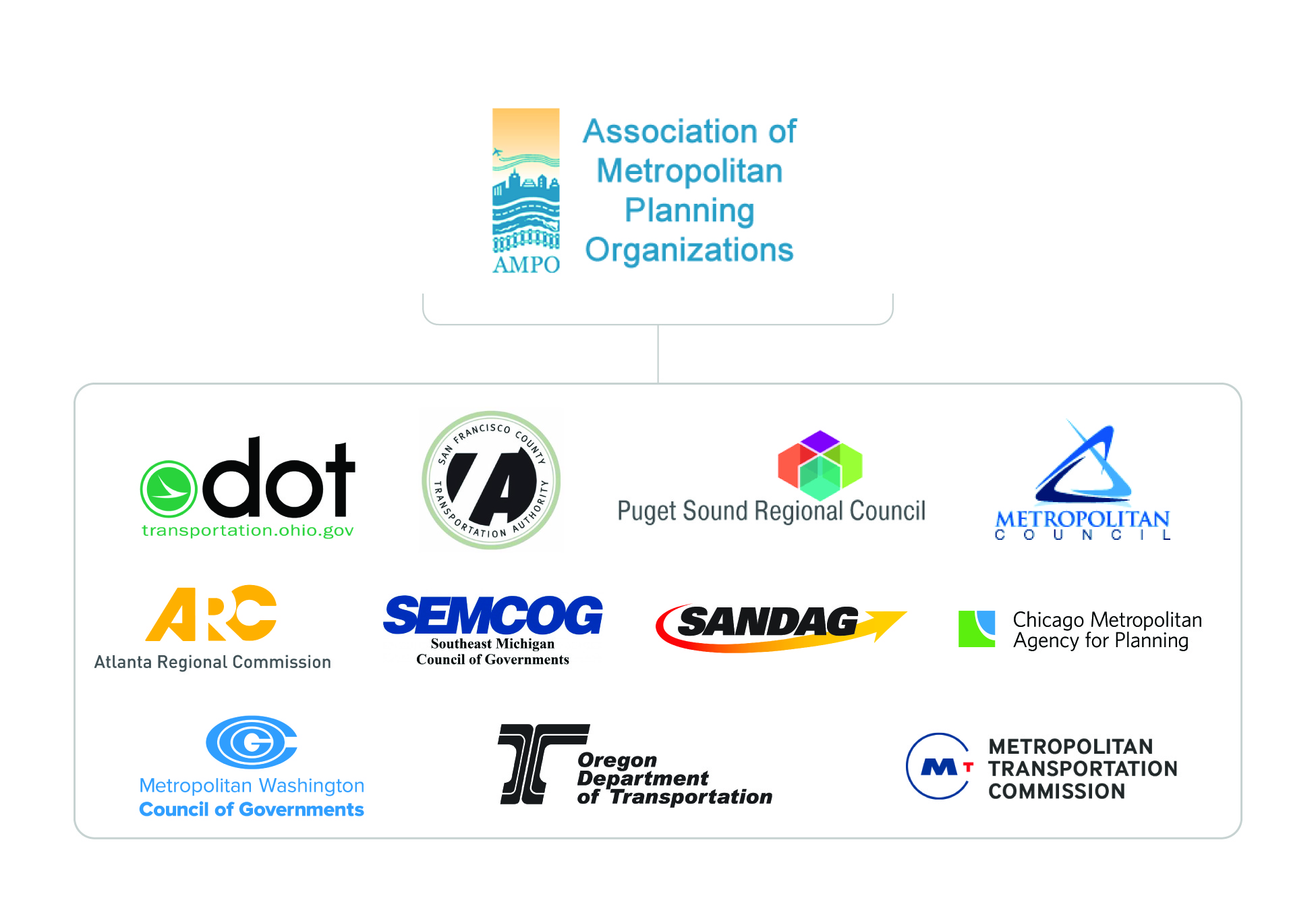WHITE PAPER
Strategies for Integrating Health Outcomes
into the Transportation Planning Process
Introduction
The US transportation system is an intricately woven network of highways, streets, sidewalks, bike paths, and more. Functionally, its purpose is to connect people and communities to one another. While this infrastructure has dramatically increased mobility, it often prioritizes or is built exclusively for motorized vehicles.
With such a narrow focus on policy and planning, the potential physical and mental health impacts these projects can have on local residents may be neglected by transportation planners. This can reduce access to public transit and limit opportunities for active transportation, further contributing to environmental hazards and health inequities, especially in historically marginalized communities.
As awareness of these inequities grows, transportation agencies are beginning to rethink how they plan by emphasizing the potential health impacts of projects. Legislation is also starting to incentivize this health focus. For instance, the Bipartisan Infrastructure Law provides $6.5 billion in new funding for programs like Safe Streets and Roads for All, Reconnecting Communities, and Healthy Streets. Recent revisions to the Benefit-Cost Analysis (BCA) guidance have included health as a factor in the benefit-cost analysis for discretionary grant funding for the first time.
These programs aim to fund new and expanded transportation projects with the goal of improving overall health outcomes for affected communities. By designing cities that promote physical activity and the use of public transportation, agencies can increase equitable access to necessary goods and services like healthy food options, medical care, and employment.
To begin considering health impacts as part of the transportation planning process, transportation agencies will need to embed health considerations into their models and data collection methods. Fortunately, new tools and methods are continuously emerging and evolving, providing transportation agencies with opportunities to integrate health considerations into their current planning processes.
Understanding the Health Impacts of Transportation
When transportation agencies evaluate projects, they traditionally look at how they might impact a narrow set of performance measures, such as congestion and automobile travel times. Incorporating health considerations into these models provides valuable information that can improve future transportation initiatives and the lives of community members — whether they travel by bus, car, or foot.
Creating effective transportation infrastructure plans that include health metrics requires agencies to collect data on the following conditions:

Active travel. The environment in which people live shapes how they travel. For example, towns and cities with connected sidewalks and bike networks encourage active transportation. On the other hand, many sprawling suburbs are unwalkable or pedestrian-unfriendly and lack accessible public transportation. As a result, personal vehicles are practically a necessity, reducing physical activity.

Air pollution. According to the US Environmental Protection Agency (EPA), emissions from motor vehicles significantly contribute to fine particulate air pollution, ground-level ozone, and other toxic air pollutants like benzene and formaldehyde. These are not only harmful to the environment, but they can also have detrimental health effects like respiratory illness and even cancer. Transportation is also the leading source of greenhouse gas emissions, contributing to climate change.

Safety. Transportation agencies must consider the impact of plans, policies, and projects on all users to reduce crash risks for drivers, pedestrians, and cyclists alike. These plans should consider the physical environment, human behavior, and emerging technologies to ensure that streets are as safe as possible.

Mental Health. While the way communities are designed can impact mental health, these impacts are not often considered in transportation decision-making. Moreover, a lack of connection with other people and communities results in social isolation and can increase the risk of depression, dementia, and early mortality, according to the Centers for Disease Control and Prevention (CDC). Transportation systems can also increase noise, which can increase stress and negatively impact mental health.
Building projects like trails, parks, and bike paths can help improve individuals’ social connections and mental health.

Health Equity. Transportation decisions have had a disproportionately negative impact on historically marginalized communities. The inadequate infrastructure in these areas often creates an environment where it is unsafe to walk or bike, and the lack of public transportation makes it difficult to travel for people without a vehicle or people with disabilities.

Why Should Agencies Use Health Metrics in Transportation Planning?
Recent federal actions around the revised Benefit-Cost Analysis (BCA) guidance have acknowledged health benefits, such as improved cardiovascular health and reduced mortality risks, for the first time. In addition, in July 2021, the Federal Transit Administration’s (FTA’s) Capital Improvements Grant (CIG) program submitted a request for information (RFI) on how the agency can start making decisions based on health impacts. Actions such as these have signaled an increasing focus on incorporating health metrics. But why should agencies use this data in transportation planning?
Transportation agencies use taxpayer dollars to fund projects, and these funds should be spent in ways that improve quality of life and public health. Moreover, agencies are in a unique position to consider ways to advance the social good and create a more equitable transportation system for all users.
Integrating health metrics into transportation planning initiatives can also empower agencies to more accurately measure and predict potential impacts on the people who comprise these communities. This could allow agencies to choose projects that are more in line with the public’s best interest.
A pragmatic argument can also be made for public agencies to incorporate health considerations into their transportation planning process. Investing in this kind of people-focused transportation infrastructure is an excellent way to not only improve community health but also save money down the road. For instance, a study from the Journal of Transport & Health found that active transportation significantly reduces disease and injuries.
With better transportation infrastructure and policies around land use, communities have more travel options and greater access to goods, services, and other opportunities. This increased connectivity can eliminate food deserts. Moreover, the physical activity of walking and biking can reduce obesity rates and other physiological issues. As a result, the accumulated health benefits can reduce overall health care costs while providing economic advantages to the local communities, according to a study from BioMed Research International.

Policies at the Intersection of Health and Transportation
Safety has always been a top priority for the US Department of Transportation (USDOT). More recently, the department and its modal agencies have signaled that health may soon become a primary concern.
The USDOT’s BCA guidance shapes how agencies apply for discretionary grants, placing a greater emphasis on active transportation modes. This new guidance requires applicants to “document the assumptions and analysis” used to forecast the number of active transportation trips generated from proposed cycling or pedestrian infrastructure.
In addition, FTA’s recent RFI explicitly requests this information, stating:
FTA intended to include the direct and indirect benefits of human health resulting from implementation of a proposed project in the Environmental Benefits measures, but has had difficulty in determining how to do so. How should FTA calculate the health benefits of transit projects?
At the state level, Washington State and Massachusetts require Health Impact Assessments (HIA) to help make decisions on public projects above a certain dollar threshold. These assessments evaluate the potential health effects of a plan before it is built or implemented. By including HIAs in the project analysis phase, one can imagine that the historical bias toward highway and road expansion may also slow as the complete array of impacts is considered. However, HIAs are not currently required by every state, and often only cover large-scale projects.
Additionally, most transportation agencies have not yet embedded health considerations into their current practices in a meaningful way. This makes it difficult to accurately assess potential health impacts, which could soon prove problematic as agencies like FTA increase their focus in this area. Fortunately, RSG has the ability to integrate these assessments into existing transportation planning frameworks in a repeatable way.
As health impacts become a key criterion for assessing transportation proposals, it could have a significant impact on project development. Agencies will have to integrate this information into their future projects and demonstrate that their proposed investments will have measurable health benefits.

Improving Health Outcomes and Transportation Planning
While the negative health impacts of inadequate transportation infrastructure are far-reaching, they often affect historically marginalized communities more than others. A lack of public transportation, bike lanes, and sidewalks can all contribute to issues like food deserts, isolation, and limited access to essential services like medical care. These issues then exacerbate the existing disparities that may already burden the people living in these areas.
To begin to rectify these inequities, transportation agencies need to integrate health metrics into infrastructure plans in a thoughtful, meaningful way.
One area where these metrics are particularly useful is project prioritization. When an agency is deciding what it will fund, it usually receives a long list of potential projects. Without data on potential health effects, identifying which investments will confer the greatest benefit can be difficult, if not impossible.
By incorporating this information into the planning process, transportation agencies can easily compare and select projects based on their relative health risks and benefits. For instance, building a highway through a town could disconnect communities and reduce walkability, and expanding a current road might create new barriers to walking and bicycling. Such changes increase the likelihood that pedestrians will be injured by traffic while also making it less likely they will use active modes of transportation.
Looking forward, another opportunity to integrate health considerations is in the transportation and land-use planning process. Every few years, local agencies map out, via their planning process, the future infrastructure of the region. Implementing a health impact model as part of developing these forecasts can provide valuable insights into the impacts of these potential projects.

Integrating Health and Transportation
As transportation agencies seek to incorporate health impact data into their projects, policies, and proposals, they will need to consider a “retooling” process. Such a process would empower them to collect, analyze, and model more information on a broader range of potential health effects, improving decision-making for public transportation plans.
Transportation agencies frequently use surveys to collect regional travel data that inform future plans. By adding health-related inquiries to these questionnaires, agencies can use an already existing tool to gain more insights into their region and residents. These questions can help gauge the physical activity of locals by asking simple questions like, “How much time do you spend sitting in a day?” or “How often do you walk or bike to a destination?” Data collection tools like rMove™ make this process quick and easy with the ability to input custom questions.
Travel demand modeling is another key area for health-impact retooling as it provides critical details on the potential effects of a transportation system. Local governments use these comprehensive views of a region’s travel behavior to support and pursue planning processes that limit issues like congestion while improving safety and efficiency. Critically, these models can also be integrated with health impact modeling tools to consider health impacts alongside more traditional transportation performance measures.
Activity-based modeling tools, like ActivitySim, can also be used to create more accurate predictions of travel behavior. By simulating individuals and their choices, including active modes of transportation, these models provide a high-resolution view of temporal and spatial patterns. This clearer picture enables agencies to better gauge transportation-health performance measures, such as active travel in a region, and can provide critical linkages to other health impact modeling tools.
VisionEval is another promising product for health-transportation integration. This open-source, strategic modeling platform comes with “plug-and-play” features that allow agencies to add new inputs to their models and easily share these among collaborators. That means they can implement custom metrics to better forecast potential health impacts.
By integrating health into new and existing models, transportation agencies can start collecting the data they need. This data will inform decisions they make on what will improve public health and accessibility to vital goods and services such as health care.
Finding a Solution for Health Impact Data Collection and Modeling
As federal, state, and local authorities place a greater emphasis on public health, transportation agencies will need better methods to collect and analyze this data.
Travel models analyze and forecast travel behavior at the individual or neighborhood scale. Strategic models, on the other hand, are deployed to help planners answer specific policy- and planning-related questions, including the potential health impacts or benefits of projects. Both of these models are essential for transportation agencies, providing valuable insights into the demand for and effects of transportation policies, infrastructure, investments, and trends.
At RSG, we apply unmatched research and analytics to provide clients with cutting-edge solutions that address their complex transportation planning needs. Our services include travel surveys, travel demand modeling, passively collected data collection, and strategic transportation planning to ensure agencies have the information and analysis they need to comprehensively plan for transportation-related health impacts.
rMove
rMove is the world’s most accurate approach for location-aware market research. It uses spatially intelligent smartphone surveys to collect data for research studies. rMove also uses built-in smartphone sensors, including Wi-Fi signals, GPS, accelerometers, and more, to passively collect data.
Customizable daily and trip-based surveys also allow users to gather participant answers on a wide range of questions. From day-to-day and long-distance travel data to health and behavior metrics, rMove captures accurate real-time information over longer collection periods while reducing respondent burden.
VisionEval
Designed to reduce greenhouse gas emissions in Oregon as part of the GreenSTEP program, VisionEval brings together a wide array of state and regional disaggregate strategic planning models under a single, open-source framework. This resulted in the creation of three separate strategic planning tools:
- Rapid Policy Assessment Tool (RPAT).
- Energy and Emissions Reduction Policy Analysis Tool (EERPAT).
- Regional Strategic Planning Model (RSPM).
In cooperation with the Oregon Department of Transportation and the Federal Highway Administration, RSG led the first phase of this development project, helping to design, implement, and manage the project for the American Association of State Highway and Transportation Officials.
Additionally, our team finalized the VisionEval framework and integration plan for merging the RPAT and RSPM tools using a set of open-source R modules and packages. Our team also developed a custom RShiny-based web application to run VisionEval and updated the scenario visualization tool to work with these models.
ActivitySim
ActivitySim is a state-of-the-practice modeling platform that estimates travel activity. Developed by RSG and a consortium led by the Association of Metropolitan Planning Organizations (AMPO), ActivitySim is an open-source solution to model the travel behavior of people.
In contrast to trip-based modeling—which analyzes trips independently of each other—activity-based modeling uses daily travel diaries, schedules, and microsimulations of people to identify patterns on an individual level. That way, transportation agencies may be able to gain insights into the complex transportation behavior and choices of people, many of which intersect with or impact health.
Want to understand the connection between health and transportation? Let's talk solutions.
Ready to learn more about collecting data and modeling the health impacts of transportation planning decisions? Complete the Contact Us form below and someone will reach out.



